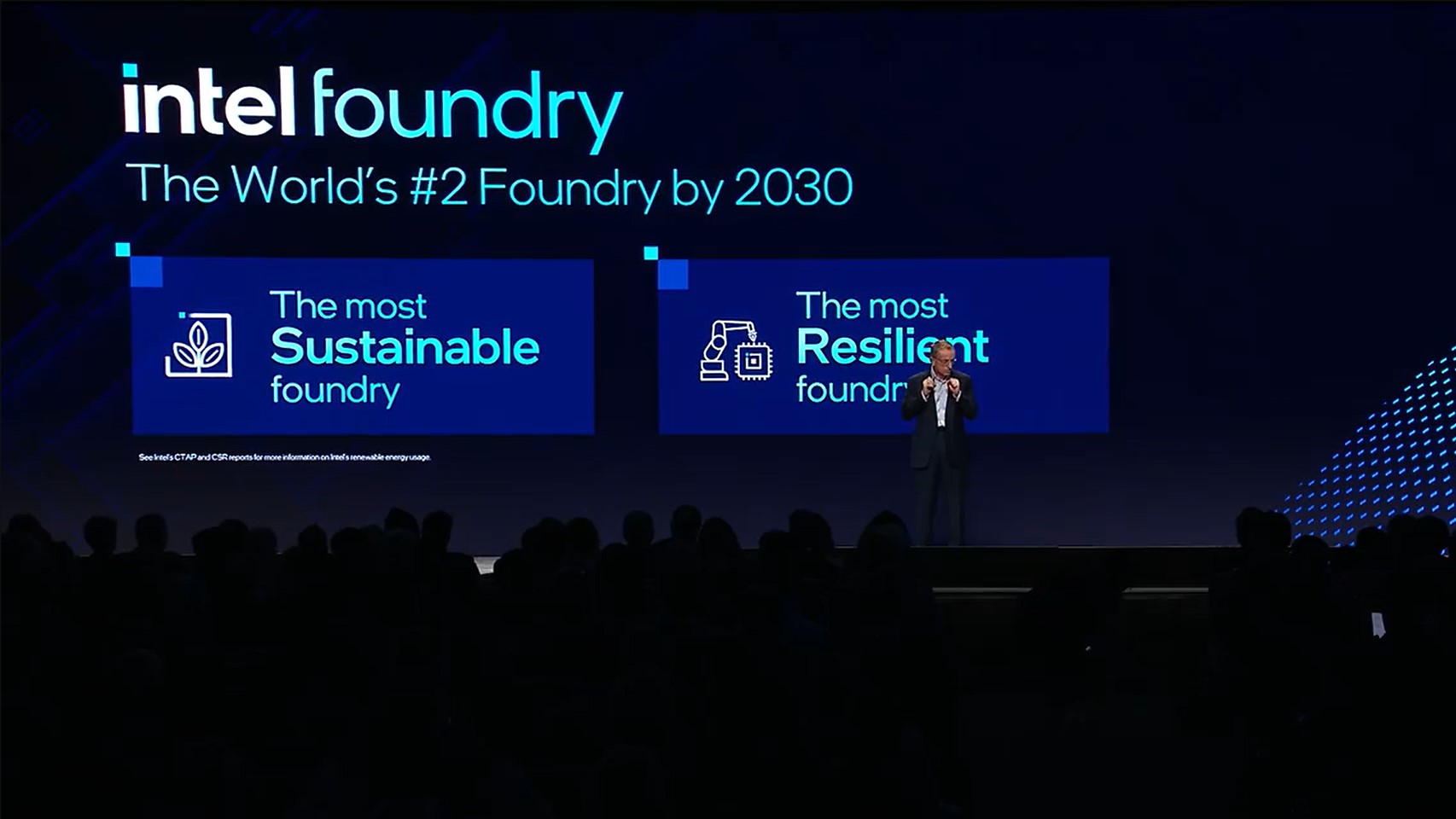Intel goes after TSMC's foundry market share by branching into Arm chips and focusing on U.S. manufacturing
TSMC currently has over 50% of the chip manufacturing market share and Intel wants to fight for some of that back.

What you need to know
- In an interview with Tom's Hardware, Intel Foundry Services Head Stu Pann discussed Intel's plan to fight for market share in the foundry market.
- Intel Foundry Services is working with Faraday to develop a 64-core 18A processor using the Arm Neoverse design.
- Stu Pann says they want to offer foundry services in more geographical locations than competitors, especially within the U.S.
Arm is all the rage right now; with our recent report that upcoming Surface devices will have an Arm variant, as well as the Xbox leak from last year that the next generation of Xbox might be Arm-based, it seems the entire world is shifting towards Arm.
With Intel being open to building Arm chips, Microsoft looking to integrate Arm with its in-house hardware projects, and the upcoming Snapdragon X Elite possibly making waves in the PC SOC market, Arm is set for a huge awakening in 2024.
Intel's vision for foundry
During the IFS direct connect, Intel described how they want to be vital to the foundry market. They want to be the #2 Foundry by 2030 and become a resilient Foundry that can withstand supply chain disruptions due to geopolitical issues and wars going on around the world. Intel even stated that semiconductors are the new oil of geopolitics and hinted that the world will fight over silicon in the future as they have fought over oil for the last 50 years.
Intel wants to rebalance the semiconductors from 80% in Asia closer to 50% in the Americas/Europe and 50% in Asia.
This goes hand in hand with what was mentioned by Stu Pann in the interview with Tom's Hardware.
"A lot of customers want at least a ‘Made in the Americas’ kind of setup. And if we do a wafer fab in the US for an 18A logic device, for example, we can package something in the Americas in its entirety without having to have it cross the Pacific Ocean."
Intel is looking for effective ways to bring most of its manufacturing closer to the Americas in an effort to have a dependable supply chain.
All the latest news, reviews, and guides for Windows and Xbox diehards.
Intel and Arm, the future seems symbiotic.
During the IFS direct connect, Arm CEO Rene Hass discussed that it feels like they are strange bedfellows, and it feels odd to be working together with Intel. However, the world seems to be getting past the idea of exclusive hardware and instead wants to build the most efficient chips for large companies like Microsoft or Faraday to power AI data centers.
"We recognize that Arm has won a lot of sockets, and we want to work with them closely to make sure that whatever they do with Neoverse is optimized for 18A.
Stu Pann
The Arm Neoverse V3 is 50% faster than the Neoverse V2, which is used in data centers. The N3 Neoverse is 20% faster, but most importantly, they are much more efficient.
Rene Hass said, "When you think about these AI data centers which are pulling hundreds of megawatts and more, efficiency matters."
With Intel's impressive 18A process node, it seems that both Intel and Arm want to ensure that the two companies benefit from the advancements the other side is making.
Where does Intel go from here?
Intel is making the smart play and has the backing of the United States government as well. They were able to get the U.S. Secretary of Commerce Gina Raimondo to attend the Intel IFS Direct Connect 2024 and discuss the United States's interest in having more chip manufacturing in the country as part of the CHIPS Act. This is a huge indicator of the importance of Intel's long-term strategy in offering a reliable supply chain to the western world as geopolitics continue to spiral toward negative realities.
By swallowing their pride, both Intel and Arm CEOs stand in a much better situation now than they did when they were stark enemies. While they are still competing in the same space, they are now working together to try to produce the most powerful, efficient chips to meet the demand for AI, as chip production lags far behind the needs seen in the world today.
Intel recently announced its newest customer Microsoft, who will be using Intel to make homegrown chips for its needs and these are the types of partnerships that will help Intel win back some market share.

Colton is a seasoned cybersecurity professional that wants to share his love of technology with the Windows Central audience. When he isn’t assisting in defending companies from the newest zero-days or sharing his thoughts through his articles, he loves to spend time with his family and play video games on PC and Xbox. Colton focuses on buying guides, PCs, and devices and is always happy to have a conversation about emerging tech and gaming news.


